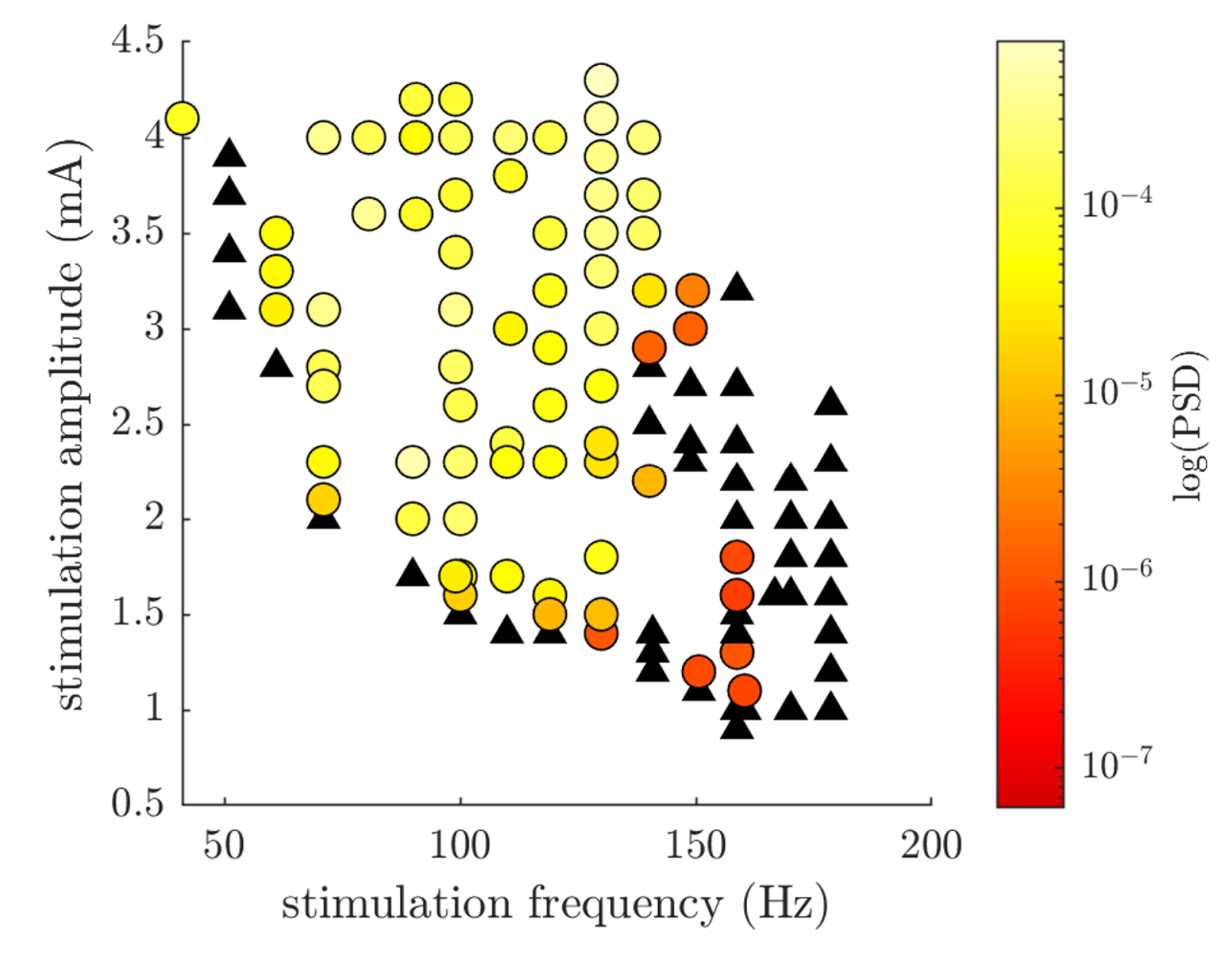Sub-harmonic entrainment of cortical gamma oscillations to deep brain stimulation in Parkinson's disease: Model based predictions and validation in three human subjects.
Brain stimulation devices can alter brain patterns at half the rate of the applied stimulation, significantly influencing symptoms. We used personalized mathematical models, based on data from people with Parkinson’s, to predict these effects. Our approach could lead to more customized and effective brain stimulation therapies for patients.
The exact mechanisms of deep brain stimulation (DBS) are still an active area of investigation, in spite of its clinical successes. This is due in part to the lack of understanding of the effects of stimulation on neuronal rhythms. Entrainment of brain oscillations has been hypothesised as a potential mechanism of neuromodulation. A better understanding of entrainment might further inform existing methods of continuous DBS, and help refine algorithms for adaptive methods. The purpose of this study is to develop and test a theoretical framework to predict entrainment of cortical rhythms to DBS across a wide range of stimulation parameters.
We fit a model of interacting neural populations to selected features characterising PD patients' off-stimulation finely-tuned gamma rhythm recorded through electrocorticography. Using the fitted models, we predict basal ganglia DBS parameters that would result in 1:2 entrainment, a special case of sub-harmonic entrainment observed in patients and predicted by theory.
We show that the neural circuit models fitted to patient data exhibit 1:2 entrainment when stimulation is provided across a range of stimulation parameters. Furthermore, we verify key features of the region of 1:2 entrainment in the stimulation frequency/amplitude space with follow-up recordings from the same patients, such as the loss of 1:2 entrainment above certain stimulation amplitudes.
Our results reveal that continuous, constant frequency DBS in patients may lead to nonlinear patterns of neuronal entrainment across stimulation parameters, and that these responses can be predicted by modelling. Should entrainment prove to be an important mechanism of therapeutic stimulation, our modelling framework may reduce the parameter space that clinicians must consider when programming devices for optimal benefit.

2023. Brain Stimul, 16(5):1412-1424.
2023. J Neural Eng, 20(2).
2023. Neuromodulation, 26(2):320-332.
2023. Mov Disord, 38(5):818-830.